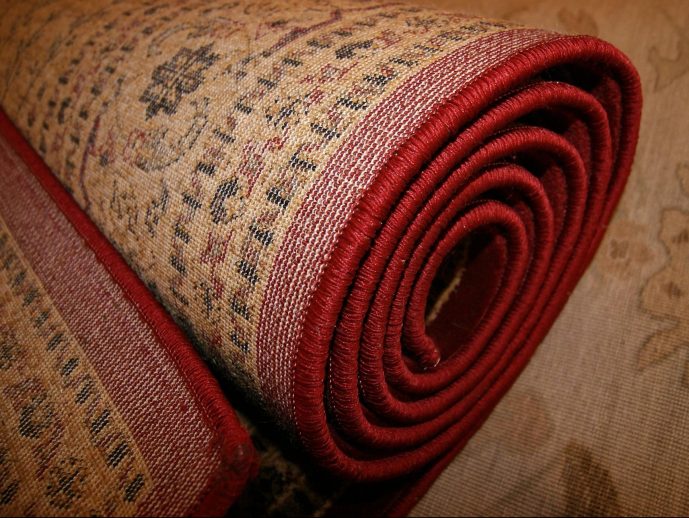Categories more
- Adventures (17)
- Arts / Collectables (15)
- Automotive (37)
- Aviation (11)
- Bath, Body, & Health (77)
- Children (6)
- Cigars / Spirits (32)
- Cuisine (16)
- Design/Architecture (23)
- Electronics (13)
- Entertainment (4)
- Event Planning (5)
- Fashion (45)
- Finance (9)
- Gifts / Misc (6)
- Home Decor (44)
- Jewelry (41)
- Pets (3)
- Philanthropy (1)
- Real Estate (15)
- Services (23)
- Sports / Golf (14)
- Vacation / Travel (60)
- Watches / Pens (14)
- Wines / Vines (24)
- Yachting / Boating (17)
Where Modern Décor Meets Heritage: How Professional Designers Are Reinventing Luxury Moroccan Rugs
Published
06/25/2025The luxury interior world is constantly changing, and one major trend in 2025 is combining elements from both traditional and contemporary styles to develop one-of-a-kind modern décor themes.
One example of this cohesion between modern décor and heritage is with Moroccan rugs, which are known for their sough-after natural materials, intricate hand-crafted patterns, and an incredibly rich cultural heritage.
What’s really interesting is that Moroccan rugs are currently undergoing a fresh renaissance this year as countless interior designers and home decorators are blending these age-old design themes into modern home aesthetics.
Below we’ll be exploring exactly how luxury designers are reinventing Moroccan rugs for today’s most sophisticated households!
The Unwavering Allure Of Authentic Craftsmanship
Every Moroccan rug tells its own story, and for centuries this rug style was so much more than just decorative accents. Even in 2025, Moroccan rugs are widely considered to be cultural heirlooms that are meant to be passed down from generation to generation.
There are many reasons why Moroccan rugs are uniquely meaningful, including their natural dyes, hand-spun wool and various symbolic tribal patterns.
It’s no secret how today’s luxury designers are going out of their way to embrace this unique authenticity and craftsmanship, and they’re doing so by closely collaborating with independent weavers and Moroccan cooperatives that preserve traditional techniques in a way that perfectly adapts into contemporary properties.
Minimalist Motifs & Modern Color Palettes
Although traditional Moroccan rugs are largely known for their diamond motifs and neutral tones, one big change this year is that designers are currently experimenting with more simplified patterns and updated color schemes.
This includes more contemporary décor colors like soft sages, earthy terracottas and muted indigos replacing the bold hues associated with older Moroccan styles.
In this way, decorators are now complementing modern minimalism and tonal textures with organic Moroccan flairs.
Customized & Bespoke Moroccan Rugs
Another very exciting development in the Moroccan rug industry is the ongoing rise of bespoke commissions, which involve luxury clients collaborating directly with artisanal workshops in Morocco to develop customized patterns, sizes and colorways that are tailored to a property’s specific room aesthetics.
All it really takes is emailing an artisanal workshop pictures of your space and your specific rug preferences, and then they’ll provide a one-of-a-kind area rug within a matter of a few months!
Mixing Old Styles & Modern Décor
The latest luxury interiors are now favoring curated, layered aesthetics that blend old heritage styles with modern décor innovations.
This is why Moroccan rugs are now being paired with modern furnishings more than ever before, and this includes sleek, minimalist sofas, contemporary art pieces and sculptural residential lighting.
This type of juxtaposition inevitably creates a well-thought, rich space that combines both texture and warmth together in a very unique way!
Ethical & Sustainable Luxury
Eco-consciousness has become seriously valuable in high-end interior design, and Moroccan rugs of all styles are widely being celebrated for their sustainability. This is because they’re made from natural materials like cotton, wool and plant-based dyes — which are typically produced on fair-trade co-ops.
Today’s professional designers are also sourcing area rugs directly form verified artisans in Morocco, which goes a long way to support responsible business practices and traditional craftsmanship.
Why Moroccan Rugs Are Still A Luxury Essential In 2025
In the interior design industry where craftsmanship, authenticity and personal expression are truly everything, Moroccan rugs provide a unique combination of versatility and heritage for homes of all styles.
Moroccan rugs have now proven that they’re capable of transcending today’s fleeting décor trends due to their ability to evolve with contemporary tastes, and just like in the past, they’re incredible long-term investments that provides meaning and beauty for decades to come.
And as today’s designers maintain the reinvention of these timeless pieces, Moroccan rugs are now so much more than floor coverings. They’re quite literally cultural artifacts, which have now been transformed for today’s luxury homes!















